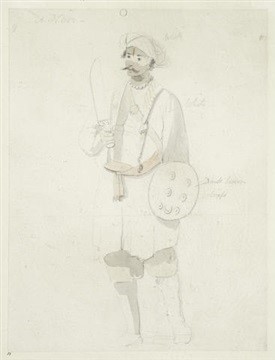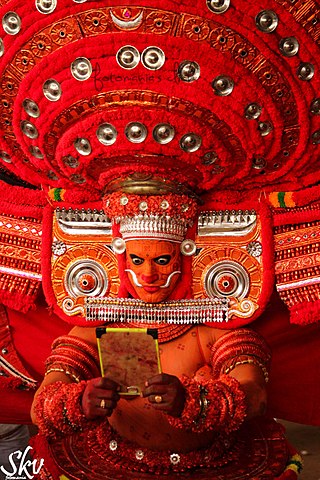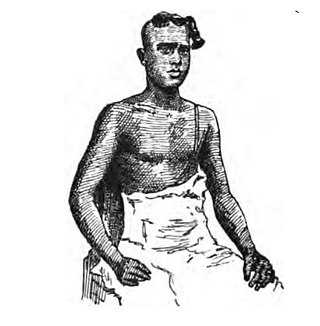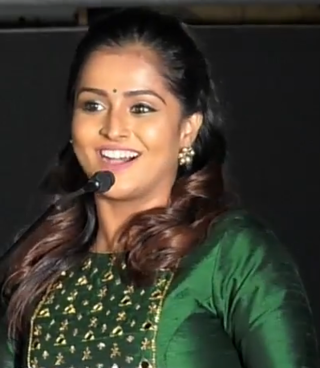Related Research Articles
Unni is used as a first name in Kerala, India. In the Malayalam language, it is also used as an adjective meaning an infant boy. Thus, Unnikrishnan or Unnikannan means Lord Krishna in the infant form and Unniyesu means Yesu in the infant form. The word is also the name of a caste among Hindus in the Southern India State of Kerala.

The Nair also known as Nayar, are a group of Indian Hindu castes, described by anthropologist Kathleen Gough as "not a unitary group but a named category of castes". The Nair include several castes and many subdivisions, not all of whom historically bore the name 'Nair'. These people lived, and continue to live, in the area which is now the Indian state of Kerala. Their internal caste behaviours and systems are markedly different between the people in the northern and southern sections of the area, although there is not very much reliable information on those inhabiting the north.

Theyyam is a Hindu religious ritual practiced in northern Kerala and some parts of Karnataka. Theyyam is also known as Kaḷiyāṭṭaṁ or Tiṟa. Theyyam consists of traditions, rituals and customs associated with temples and sacred groves of Malabar. The people of the region consider Theyyam itself as a channel to a god and they thus seek blessings from Theyyam.
Pushpaka is a caste of Hindu Brahmins of Kerala. In Malayalam language, this caste is also referred to as Pushpakan, Pushpakar, Pushpaka Unni or Pushpakan Unni. They are a part of the Ambalavasi community in Kerala.
The PulayarIPA:[pulɐjɐr] is a caste group mostly found in modern-day Indian states of Kerala, Karnataka and historically in Tamil Nadu. They are a classified as a Scheduled Caste under India's reservation system in Kerala and Tamil Nadu.
Brahmanippattu is a type of domestic devotional offering performed usually in connection with marriages. Women of the Nambeesan caste called Brahmanis or Pushpinis alone are entitled to do it.

The Nambudiri, also transliterated as Nampoothiri, Nambūdiri, Namboodiri, Namboothiri and Nampūtiri, are a Malayali Brahmin caste, native to what is now the state of Kerala, India, where they constituted part of the traditional feudal elite. Headed by the Azhvanchery Thamprakkal Samrāṭ, the Nambudiris are the highest ranking caste in Kerala. They owned a large portion of the land in the region of Malabar, and together with the Nair monarchs, the Nambudiris formed the landed aristocracy known as the Jenmimar, until the Kerala Land Reforms starting in 1957.

Malayali Brahmins or Kerala Brahmins are the group of Brahmins from the Indian state of Kerala. These groups include the Nambudiri, Pushpaka Unni][Pushpaka|Kurukkal, Nambeesan, Nambidi, Moothath (Moosad), Ilayath, Chakyar, Nambiar, and the Potti. The Pidarar community are Brahmins that follow Kaula sampradaya.

The Ezhavas are a community with origins in the region of India presently known as Kerala, where in the 2010s they constituted about 23% of the population and were reported to be the largest Hindu community. The Malabar Ezhava group have claimed a higher ranking in the Hindu caste system than do the others, although from the perspective of the colonial and subsequent administrations they were treated as being of similar rank.
Ambalavasi, more properly Ampalavasi, is the generic name for a group of castes among Hindus in Kerala, India, who have traditionally rendered temple services.

Pushpaka Brahmin is a generic term that refers to a group of certain Hindu Brahmin castes in Kerala.

Remya Nambeesan is an Indian actress and singer, who primarily works in Malayalam and Tamil films.

Kanniyar Kali is a folk dance ritual performed in Temples of villages in Alathur and Chittur Taluk of Palakkad district of Kerala. The event is usually a part of Vishu celebrations of the village and usually succeeds the Vela and is usually performed during the months of April and May. It is an agricultural festival dance of Nair community. Kanniyar Kali, despite the name of the Virgin, does not have anything to do with the Kannaki cult.
Nambidi is a caste of Kerala, India. The form a part of the Ambalavasi community. They are considered to be Malayali Brahmins and to have originated when a section of the Nambudiris was degraded. They also have the same rights and rituals of nambudiri's. The nambidi ladies are usually called Mandals / Atholammas used to wear the cheruthalis and are similar to Antharjanams. The nambidi's also had great economic and Societic importance and have the same grade of Nambudiris in the Society. They have no right to do Poojas in temples. Nambidis are divided into two: the ones who wear the sacred thread and perform the Upanayanam and the ones who do not. The former are Nambudiris who were degraded to the Lower status since their ancestors had committed a heinous act by murdering a ruler of Kerala. On their return the other Nambudiris welcomed them but they refused to seat themselves with the other Brahmins owing to the sin they committed and instead sat on the steps of the hall. They came to be known as Nom Padimels or those on the steps and this term was later corrupted into Nambidi. The latter are Nairs who were assigned the Nambidi title. Namboodiris will Join with nambidi's in all their functions and rituals.
Pushpaka may refer to:

A. N. Shamseer is an Indian politician who is the Speaker of the Kerala Legislative Assembly since 2022. He represents Thalassery State Assembly Constituency since 2016. He was the CPI(M) nominee for Lok Sabha in the Vadakara Lok Sabha constituency in the 2014 Indian general election and is Kerala State Committee member of the Communist Party of India (Marxist). He was the former President of Kerala lobby of the Democratic Youth Federation of India (DYFI).

Philips and the Monkey Pen is a 2013 Indian Malayalam language children's film written by Rojin Thomas and directed by Rojin Thomas and Shanil Muhammed. The film stars Sanoop Santhosh, Jayasurya and Remya Nambeesan.

Theeyattunni or Theeyadi Unni is a caste of Hindu Brahmins of Kerala, India. They are a part of the Pushpaka Brahmins and Ambalavasi community in Kerala. Theeyattunnis are traditionally the performers of an ancient art form called Theeyatt. Theeyattunnis have the right for Tantric Poojas and other privileges enjoyed by the Nambudiri caste.
Sree Pushpakabrahmana Seva Sangham (SPSS) is a registered charitable organisation which works for the progress of Pushpaka Brahmins, a group of culturally identical Brahmin castes like Pushpaka Unnis, Theeyatt Unnis, Kurukkals, Nambeesans etc. in Kerala.
Plappalli or Plappally is a Hindu Brahmin Caste in Kerala. This caste is peculiar to Travancore and classified under Ampalavasis. The males are invested with Sacred Thread between the year 8 and 16. Formerly the Ilayathus officiated as their priests, but now the service is performed by Nampoothiris or Pottis.
References
- ↑ "Sree Pushpaka Brahmana Seva Sangam". spssworld.com. Archived from the original on 28 October 2020. Retrieved 8 August 2020.
- ↑ Caste System in Kerala (PDF).
- ↑ Nampoothiri, M.V. Vishnu (2012). Folklore: The Identity of Culture. Department of Information & Public Relations, Government of Kerala. p. 73.
- ↑ Induchudan, V.T. (1969). The Secret Chamber: A Historical, Anthropological & Philosophical Study of the Kodungallur Temple. Cochin Devaswom Board. p. 260.
- ↑ George, K.M. (1956). Ramacharitam and the Study of Early Malayalam. National Book Stall. p. 13.